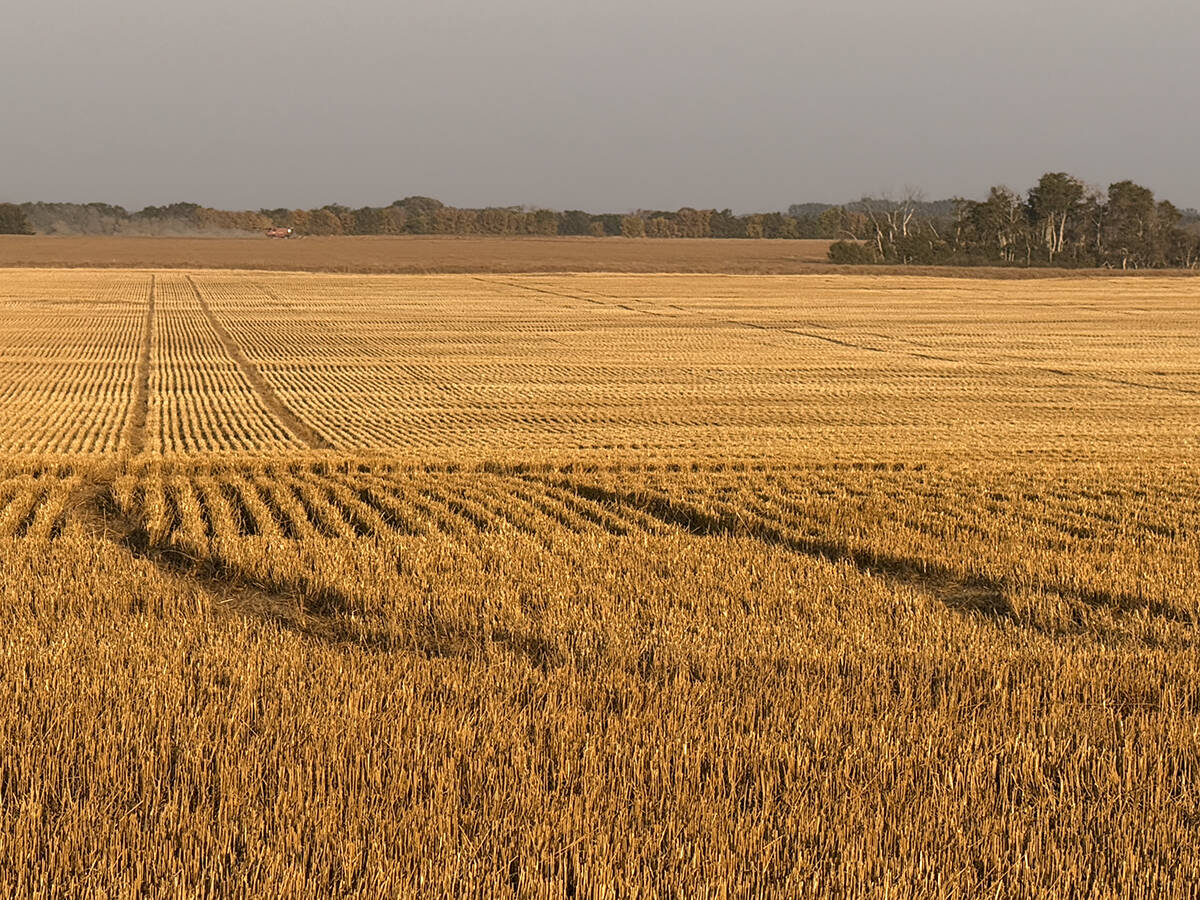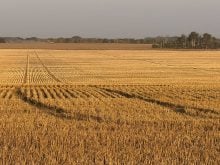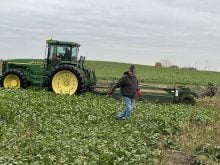SASKATOON – Marge Garnier’s timing couldn’t be better.
This past winter was one of the coldest on record on the Prairies, but calves don’t stop coming just because the weather’s turned ugly.
Most barns aren’t big enough – if you’ve got a barn at all – to keep all the newborns in while other expectant mothers are lined up outside.
So you kick the calves out, and hope the most that happens is their ears get frozen.
But in the world of purebred cattle, where looks are everything, animals with frozen ears don’t bring top dollar. Their breeding might be the same, their performance might be even better, but buyers just don’t pay.
Read Also

Final crop reports show strong yields, quality
Crops yielded above average across the Prairies this year, and quality is generally average to above-average.
Marge and Harvey Garnier raise commercial and purebred Blonde d’Aquitaine cattle on their farm at Redvers, Sask. They calve in February.
Pity produces product
Last winter, Marge decided to finally do something about “all those poor babies” that can end up with frozen ears. She made them earmuffs out of polar fleece.
“I wanted something that would stay on,” Garnier said in a telephone interview from their Redvers farm, so she patterned her first pair after a halter.
The earmuffs are sewn into a wide band that fits over the calf’s ears and wraps under its neck. There’s a narrow strip of material that runs down the calf’s face and connects to another band that wraps around the calf’s nose. The bands are fastened with Velcro.
She wanted something that would be warm. After making a jacket for a grandson out of polar fleece, Garnier decided it would be the best material. “It’s warm and it’s got a bit of stretch” she said. Another real plus is it’s washable.
After modifying her pattern – “my first ears were way too long” – Garnier said her invention worked so well that some of the neighbors said she should sell it.
So she did, by sending a picture and explanation to Farm Show, the Minnesota publication that features equipment and farmer inventions.
About that same time, Garnier was also clerking at Agribition, a job she does every year, and heard about twin Holstein heifers born in the dairy barn. She hustled over and asked whether the heifers could model her invention.
The phone calls started. By Christmas, she had 100 orders.
At last count, Garnier had sold 1,600 pairs of earmuffs. Orders were still coming in early April.
Garnier has already booked a booth at Agribition and another at FarmFair in Edmonton for this year and is trying to convince Harvey to go back to the Royal Winter Fair in Toronto. But this time, instead of showing cattle, they’ll be exhibiting earmuffs.
Garnier’s color-co-ordinated creations have gone to every province in Canada plus the U.S. states of Montana, North and South Dakota, Michigan, Illinois, and Wisconsin.
She started out sewing the earmuffs on a regular machine, but soon invested in a serger. She and her husband Harvey sewed from eight in the morning to midnight all through the frigid winter, knowing their buyers needed the headgear right away. The longest anyone had to wait for an order was a couple of days, she said.
Extra help needed
But the work has been too much for one family, so Garnier has some women in the community sewing for her on a piecework basis.
“I’d like to keep it in the community,” she said. “I’ve thought about going to a manufacturer but I might lose control. I have reservations about that.”
Garnier has taken the step of buying her fabric from a wholesaler. At $15 a metre retail, polar fleece is not cheap.
In fact, she had friends and relatives in every city in Western Canada scouring fabric stores for remnants.
She figures she’s used 500 metres of fabric this year alone.
Garnier isn’t going to stop sewing just because the weather has turned warm. Her goal is to have 2,500 pairs stockpiled for next year.
She’s really tickled with the positive feedback she gets from all the people that have bought her earmuffs.
“It makes you feel good that you’ve come up with something that works so well.”














